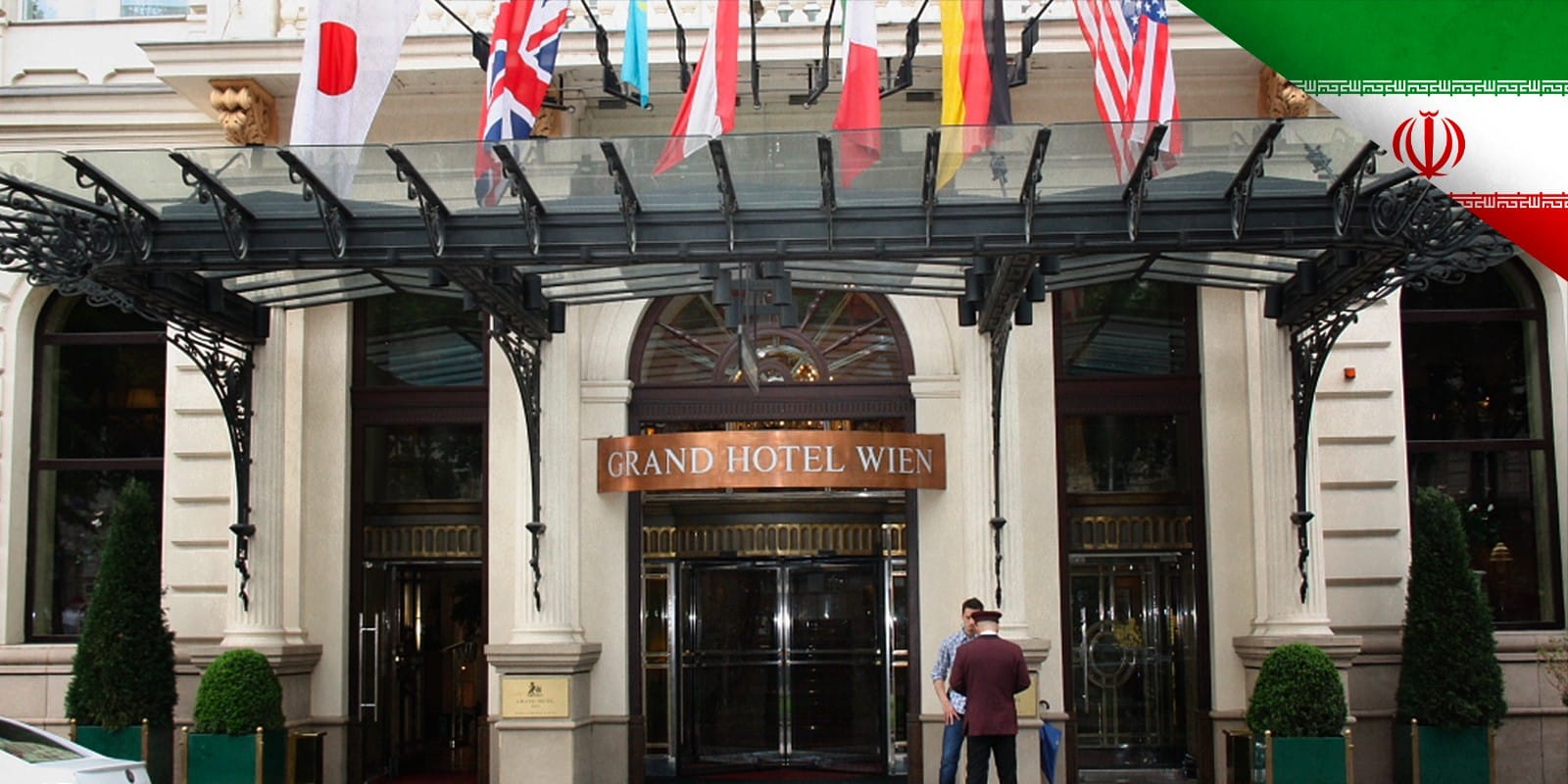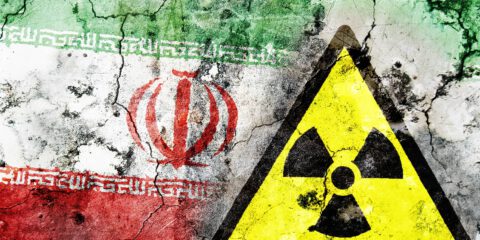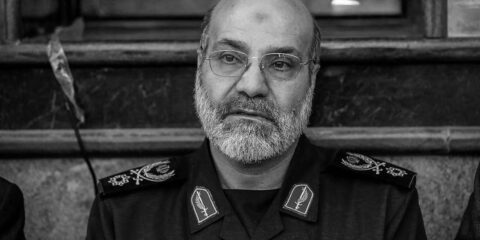From Tehran’s perspective, the goals are lifting the sanctions and securing immunity from military attacks.
Ahead of the return to nuclear talks in Vienna, the Biden administration has declared that the US will not allow Iran to become a nuclear power and that the preferred way to achieve that goal is through a diplomatic solution.
If negotiations fail, the US has “other means” at its disposal. Unfortunately, the administration has not explained what this means.
These statements by the administration have hindered rather than encouraged efforts to block Iran’s race to the bomb.
Most of the shortcomings in strategy are reminiscent of those of the Obama administration. Thus, it is doubtful whether Biden and his senior officials have learned the necessary lessons and will do better in the forthcoming round of negotiations.
The first failure is procedural. It may seem less important than more concrete matters, but it is always crucial.
The negotiations in Vienna are being conducted in a format known as “proximity talks.” Iran has refused to negotiate directly with the Americans; they only meet with British, German, and French representatives, who shuttle back and forth between US and Iranian officials.
This format is advantageous to Iran. Instead of forming one Western bloc united against Iran, the Europeans serve as mediators, giving the Iranians an opening to play off the divisions between the Americans and Europeans. Iran wants to squeeze concessions from the Western powers in exchange for its willingness for direct talks with the Americans.
Since the talks began in April 2021, Iran has determined the schedule. Tehran decides when the talks are suspended and resumed.
There was indeed a pause in negotiations due to the presidential elections in Iran held on in June. The Biden administration estimated that they could be renewed after President-elect Ebrahim Raisi took office.
Still, the Iranians did not rush, preferring to buy time to enrich more uranium to a 60% level, very close to military grade. Only after US officials warned that their patience was wearing thin and would not wait endlessly, the three European powers and Iran agreed to resume the negotiations with the US on November 29.
Early in his presidency, Biden and his senior foreign and defense officials talked about the need to reach a new nuclear deal with Iran that would be “stronger and longer” than the one signed in 2015.
The Americans adopted a two-step strategy. In the first phase, sanctions imposed by the previous administration would be lifted in exchange for Iran’s return to the limitations imposed on its nuclear program in the 2015 agreement.
In the second phase, negotiations on a new deal would extend the duration of the 2015 deal and address issues omitted from that agreement, including Iran’s ballistic missile program, its military interventions in Lebanon, Syria, Iraq, Yemen, and Gaza and its sponsorship of international terrorism.
This strategy was farfetched from the outset, and today it seems out of reach. Moreover, Iran has announced that it will not discuss the additional issues beyond its nuclear program. So Biden is signaling that he will settle just to return to the 2015 agreement.
Contrary to common belief, establishing the negotiating agenda is not simple and usually takes up significant time during preliminary talks. Then, the parties decide the issues to be discussed and the order of debating them.
During the previous round of talks, two working groups were formed. One dealt with removing US sanctions and the other on returning to the 2015 agreement. But now, Iran seems to have hardened its stance saying the upcoming talks will be all about lifting all US sanctions, including those unrelated to the nuclear program, such as those imposed for human rights violations.
One of the primary deficiencies in the 2015 agreement was an effective international inspection regime of Iran’s nuclear facilities. The inspection clauses left room for Iran to outwit the inspectors of the United Nations International Atomic Energy Agency.
Iran’s rulers have often stated that it does not intend to develop nuclear weapons, and all the infrastructure it was building was solely dedicated to peaceful purposes. Unfortunately, a few policymakers in the US and Europe still believe in these promises.
However, there is enough evidence to claim that Iran has cheated and lied about the true purposes of its nuclear program. For years, the Iranians have concealed nuclear facilities and equipment.
Iran’s nuclear archives brought to Israel and unveiled in April 2018 proved that the Iranian goal was always to attain nuclear weapons.
If world powers would like to open a new page with Iran, it would require a detailed disclosure of the history of its nuclear program, something that it has been unwilling to divulge until now.
With a credible military threat, stopping Iran from getting a nuclear capability and reaching a good agreement is possible. Former president Barack Obama warned many times that “all options are on the table.” But it was clear that military action was not one of them.
In light of the failed US military interventions in Afghanistan and Iraq, Iran assumed that Obama didn’t intend to use force. That assessment was reinforced after Obama set in 2012 a “red line” for Syrian President Bashar Assad, warning him that if he attacked his citizens again with chemical weapons, the US would retaliate.
In August 2013, Assad ignored this warning, attacked with chemical weapons, but Obama did nothing.
Israel’s threat of military action decreased sanctions, and cash payments induced Iran to enter negotiations and reach the 2015 agreement.
In the recent strategic dialogue in Manama, the capital of Bahrain, Secretary of Defense Lloyd Austin criticized Iran. However, he reiterated the preference for a diplomatic solution. He said: “Our potential punch includes what our friends can contribute and what we have prepositioned and what we can rapidly flow in.”
“Our friends and foes both know that the United States can deploy overwhelming force at the time and place of our choosing,” he added.
Here, too, Austin referred only to capability, not will. The US has a vast military capability and can attack and destroy the Iranian nuclear facilities. The problem is a willingness to use force.
President Joe Biden spoke about “other options” if diplomacy fails, but many doubt he would order a military strike.
Recently, Iran attacked a US base in Tanf on the Syrian-Iraqi border. The United States did not retaliate. According to officials quoted in The New York Times, the Iranians were trying to create a strategic equation whereby attacks on American targets serve as retaliation for Israeli strikes on Iranian bases in Syria.
Instead of responding militarily against the pro-Iranian militias that conducted the attack in Tanf, the United States told Israel its attacks against Iran’s nuclear program were counterproductive, according to The New York Times. Such positions can only reinforce Tehran’s rigidity.
The return to negotiations is a positive step, but it says nothing about Iran’s true intentions. Countries often enter international negotiations with no intention of reaching an agreement. They have their agendas.
From Tehran’s perspective, the goals are lifting the sanctions and securing immunity from military attacks.
Therefore, Biden’s strategy raises many questions. The withdrawal from the starting position of a more robust and longer agreement and tolerating the Iranian conditions for negotiations does not provide any leverage against Iran.
Given Iran’s strategy of buying time through months of ongoing negotiations as it proceeds forward toward the bomb, means that the Biden administration’s position may erode even further.
JISS Policy Papers are published through the generosity of the Greg Rosshandler Family.
Photo: © Bwag/CC-BY-SA-4.0









 - בניית אתרים
- בניית אתרים